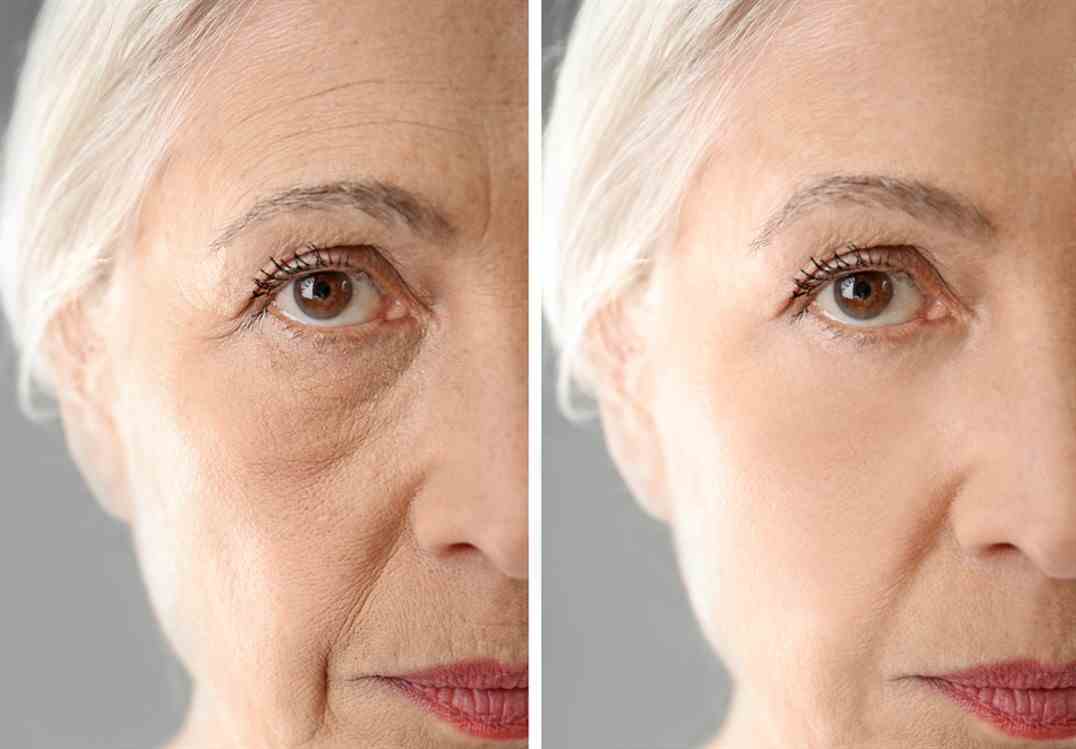
What is a face lift?
A face-lift is the most effective way to remove or reduce the appearance of wrinkles and sagging of the face caused by aging. In a face-lift, the skin on the face is literally lifted so that the skin and tissues under it can be tightened and smoothly repositioned on the face.
Facelift is one of the most common cosmetic surgeries in the head and neck area. Since the first face-lift was documented in Báczyla, Poland in 1901, surgical techniques have evolved over the years. Previously, only the outer layers of the facial skin were treated during the procedure. This method has proven to be aesthetically unsuccessful in the immediate aftermath of the operation (the faces looked unnaturally tight) as well as in the long-term (sagging of the facial skin shortly after the operation). The lessons learned from this surgical method have led to the fact that the face-lift operation cannot be performed only by treating the outer layers of the skin, This is because of the elasticity of the skin and also because the properties of the elasticity of the skin differ from person to person. Therefore, any successful facelift must also treat sagging muscles.
Before having a face lift, All hair is pulled back with an elastic band and some strands near the slits are cut. The incision begins above the hairline at the temples and extends in front of the ears and then behind them all the way to the scalp. A small incision is also made under the chin to tighten the neck. The surgeon then tightens the muscles and loose tissue and removes the excess fat. After tightening the deep layers of tissue, He lifts the excess skin and pulls it to the side of the ear and gets rid of it, then stitches the incisions and wraps the face to protect the area.
The results of a face-lift procedure differ from one patient to another. Most people have had one facelift in their lifetime, while others require a second operation after seven or fifteen years.
Is a facelift suitable for me?
Have you recently started noticing the deep folds of your cheek that extend from your nose down to the corner of your mouth? Have you noticed sagging cheeks, chin skin, and creases on your neck? Have you pulled the skin of your face and neck back and were surprised by the result? If you answered yes to all of these questions, you need a facelift.
The face-lift procedure is intended for men and women whose facial skin muscles have sagged and taken the form of wrinkles and drooping face. The ages of those who need the operation range from young people (mostly as a result of significant weight loss) or very advanced ages (where the face is lifted for the second or third time). However, the ideal age for a facelift is in the 50s.
What can I expect after a facelift?
Bandages are placed after the face-lift. The dressings are usually removed in one to two days. If a drainage tube is placed (a tubercle – usually behind the ear), They will be removed one to two days after the facelift. The stitches will be removed within 5 to 10 days.
After a face-lift, medications are prescribed to relieve pain. It is expected that there will be swelling and bruising on the face and cold compresses help relieve these side effects. It is preferable to keep the head as high as possible.
Dr. is advised. رامي العناني avoids smoking and even secondhand smoke for 2 to 4 weeks before and after a facelift. Smoking increases the risks to the skin and leads to tissue death. It delays the healing process and makes wound healing worse.
At first, the face may look strange, and the skin may be unusual to the touch and a bit dry. The feeling of numbness may last for months. All of these are normal things. But it is important to be prepared for it.
Sometimes men have to shave new places on the face because the skin has been rearranged, But laser hair removal or electrolysis can be used to treat hairs that have moved to a new location.
before and after :
[metaslider id=”2449″]
